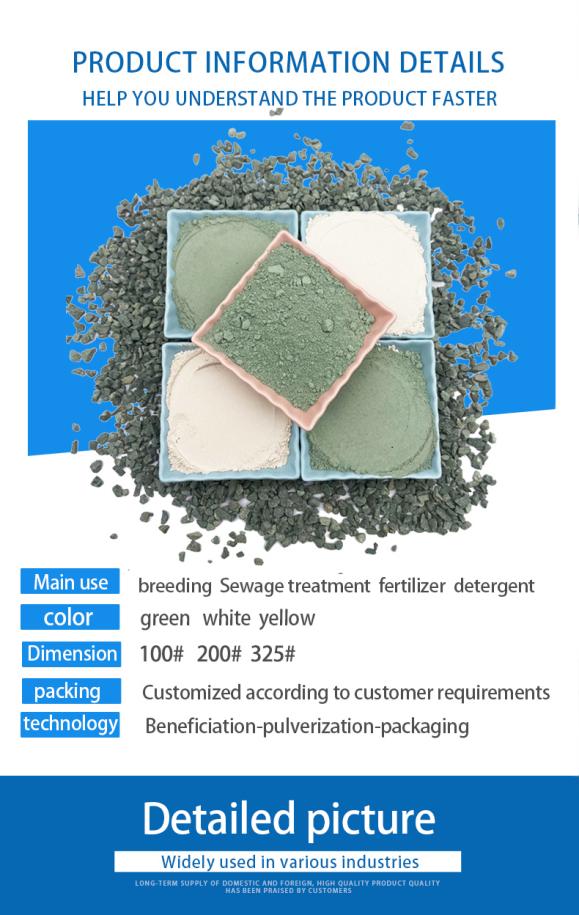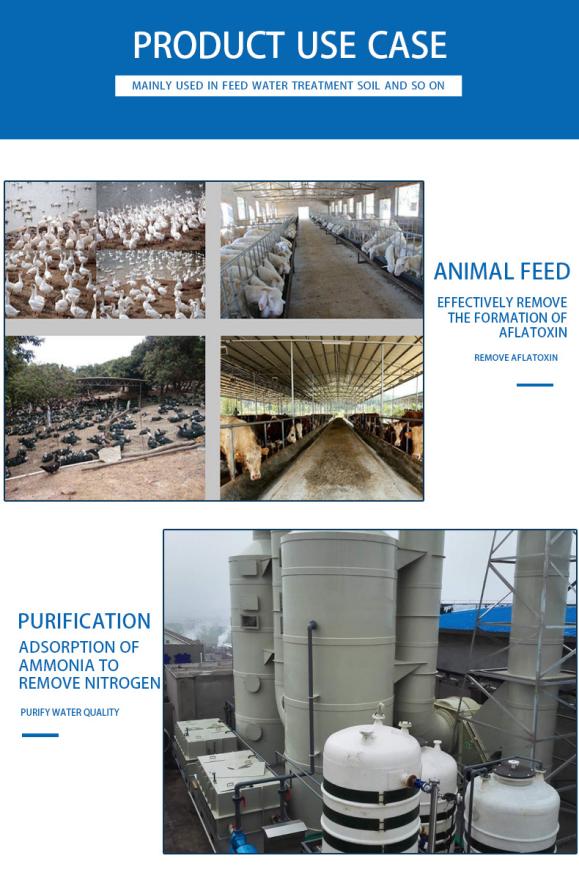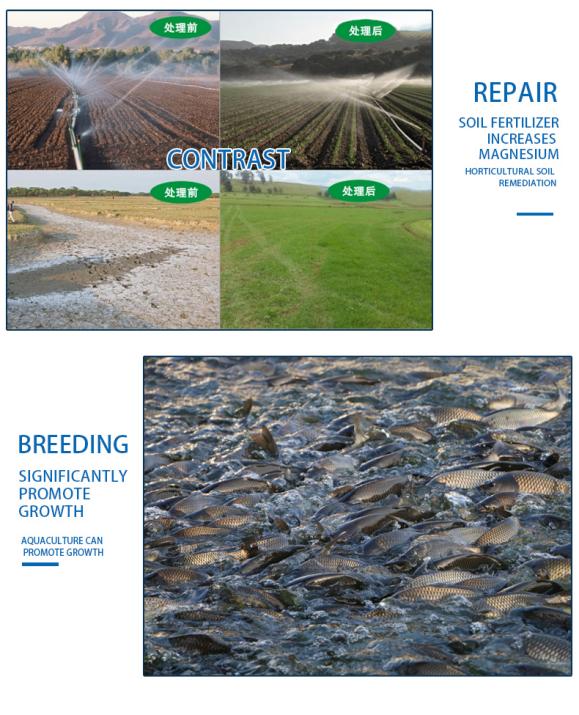
Zeolite jẹ nkan ti o wa ni erupe ile iyanu
Natural zeolite is an emerging material that is widely used in industry, agriculture, defense and other sectors, and its use is constantly expanding. Zeolite is used as an ion exchanger, adsorption separating agent, desiccant, catalyst, cement mixture.
Ninu awọn ile-iṣẹ epo ati awọn ile-iṣẹ kemikali, a lo bi fifọ katalytic, hydrocracking ati isomerization kemikali, atunṣe, alkylation ati disproportionation ti isọdọtun epo; Gaasi ati isọdọtun omi, iyapa ati awọn aṣoju ipamọ; Lile omi rirọ, omi okun desalination; Awọn olutọpa pataki (afẹfẹ gbigbẹ, nitrogen, hydrocarbons, bbl). Ninu ile-iṣẹ ina fun ṣiṣe iwe, roba sintetiki, awọn pilasitik, resins, awọn kikun kikun ati awọn awọ didara. Ni aabo orilẹ-ede, imọ-ẹrọ aaye, imọ-ẹrọ ultravacuum, idagbasoke agbara, ile-iṣẹ itanna, ati bẹbẹ lọ, a lo bi oluranlowo iyapa adsorption ati desiccant. Ninu ile-iṣẹ awọn ohun elo ile, o ti lo bi omi simenti lile ti nṣiṣe lọwọ admixture, fifin ina apapọ ina atọwọda, ṣiṣe ina ati awọn awo-giga ati awọn biriki. Ti a lo bi atunṣe ile ni iṣẹ-ogbin, o le ṣe ipa ninu ajile, idaduro omi, ati idena awọn arun ati awọn ajenirun. Ni ile-iṣẹ adie, awọn afikun ati awọn deodorants ti a lo bi ifunni (ẹlẹdẹ, adie) le ṣe igbelaruge idagbasoke ti ẹran-ọsin ati mu ilọsiwaju iwalaaye ti awọn adiye. Ni awọn ofin aabo ayika, a lo lati ṣe itọju gaasi egbin ati omi idọti, yọ kuro tabi gba awọn ions irin pada kuro ninu omi egbin ati omi egbin, ati yọkuro awọn idoti ipanilara ninu omi idọti.



From a practical point of view, zeolite can be adapted for a variety of uses:
(1) Aquaculture: ammonia filtration in fish hatcheries; Biological filter media. In fish farms, the water load of fish can be very high. This leads to rapid contamination of the water, so the concentration of toxic substances increases rapidly. Therefore, a large amount of water purification is necessary. Zeolite can be used in various steps of the purification process: as a secondary filtration unit after biological purification and/or aeration; as a supporting material for bacteria; As a filter medium, it is used to remove solids and suspended particles and simultaneously remove unwanted ions.
(2) Ogbin: iṣakoso oorun; iṣakoso ayika ti awọn ẹranko igbekun; Awọn afikun ifunni ẹran-ọsin. Ni Ila-oorun Yuroopu, Japanese ati Cuban zeolite jẹ lilo aṣa ni iṣẹ-ogbin. Ṣafikun nipa 5% si awọn ounjẹ ẹran-ọsin dinku amonia ati awọn itujade oorun, imudara kikọ sii ṣiṣe, awọn iranlọwọ ni gbigba mycotoxin, ati pe o le pese awọn eroja itọpa. Ni ọdun diẹ sẹhin, NASA lo zeolite ọlọrọ-ounjẹ bi ajile itusilẹ lọra.
(3) Horticulture: nọsìrì, eefin; Ododo; ẹfọ / ewebe; Ewe; gbigbe igi ati abemiegan; Atunse ilẹ turfgrass; isọdọtun, atunṣe, idena keere; igbo (igbo, awọn ohun ọgbin); Hydroponic alabọde.
(4) Household products: household odor control; Pet odor control. Domestic uses mainly involve the odor and liquid adsorption characteristics of zeolite. A range of gases, including formaldehyde and hydrogen sulfide, have been shown to be adsorbed by zeolite.
In the United States, zeolite is often added to small air filters to adsorb such gases and reduce allergy problems. It can be used to dry sneakers, reduce moisture in the wardrobe, and is often used to absorb cigarette odors. A very useful carpet cleaner based on zeolite. The most common use of zeolite in the home is as a fat absorbent for cat litter and barbecue. It is also used to adsorb ammonia in fish tanks. When the waste product is fully utilized, it is an ideal addition to compost, helping to regulate and ultimately contribute to soil moisture and nutrient retention.
(5) Industrial products: absorbent of oil and spillage; Gas separation. Industrial uses focus on the liquid and vapor absorption properties of zeolite. It can be ideal for particulate oil/chemical spill cleanup; It is inert and safe to use.
(6) Egbin ipanilara: atunṣe aaye/imukuro.
(7) Itọju omi: sisẹ omi; Yiyọ ti eru awọn irin; itọju omi idọti odo odo; Amonia/ammonium yiyọ kuro ninu sludge/omi idọti ilu; Yiyọ ti eru awọn irin; Septic ojò leaching aaye, ati be be lo.
Pinpin
-
Chlorolite is obtained from zeolite ore by high temperature sintering and dehydration treatment.IroyinMay.24,2024
-
The main component of talc is magnesium silicate containing talc water,IroyinMay.22,2024
-
Alumina is a high-hardness compound commonly used in the manufacture of refractory materials.IroyinMay.20,2024
-
Hollow glass beads are tiny, hollow glass spheres,IroyinMay.16,2024
-
Fused quartz is the amorphous (glassy) state of silicon oxide (quartz, silica).IroyinMay.09,2024
-
Vermiculite is a natural, inorganic, non-toxic mineral that expands under high temperature.IroyinApr.09,2024






